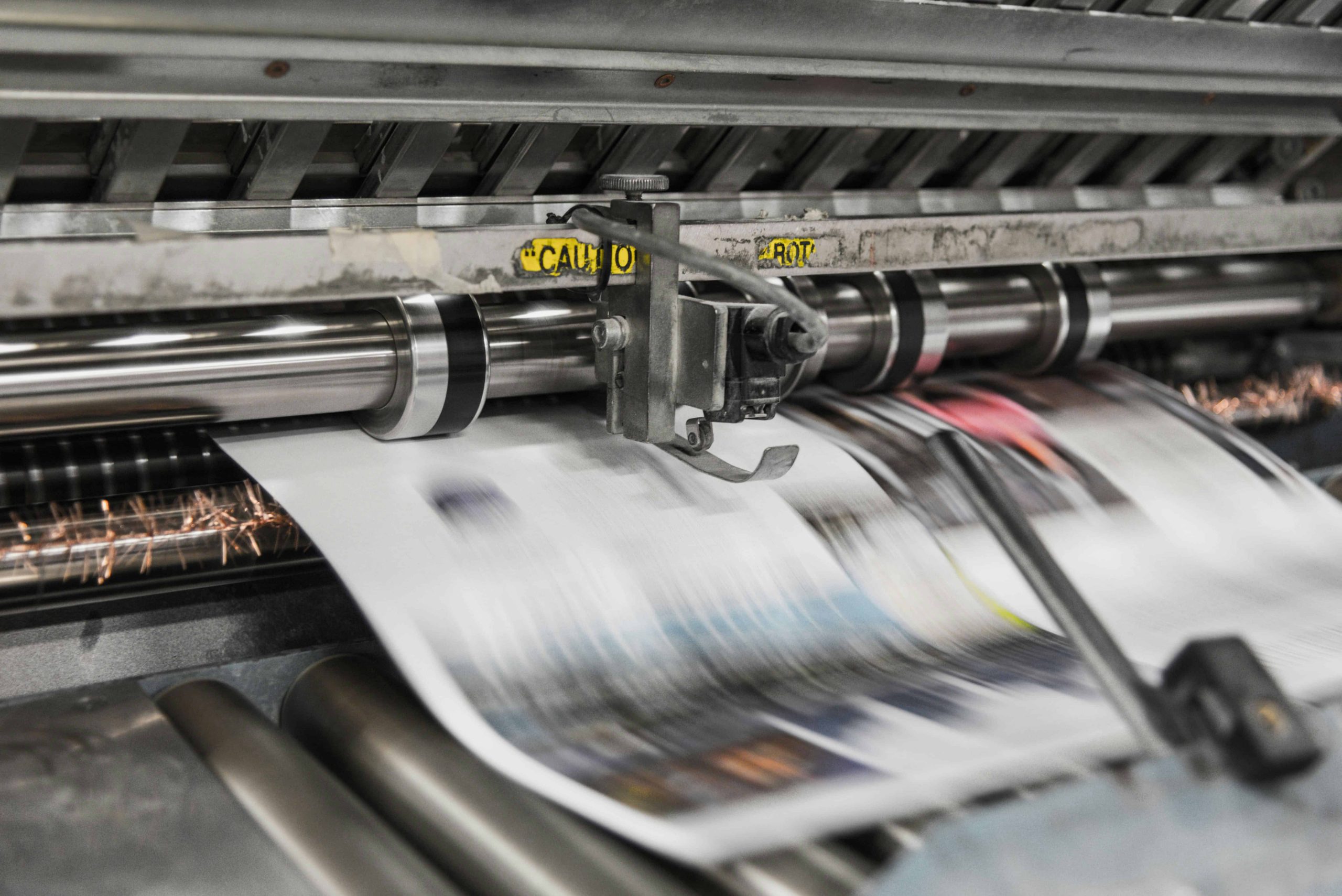
09 Sep Print vs. Digital Publishing for New Authors in 2024
Print vs. Digital
The publishing industry has long been dominated by traditional print publishing, where the process of getting a book into readers’ hands was typically controlled by established publishing houses. These institutions handled everything from editing and cover design to printing and distribution, offering authors the resources and expertise needed to bring their work to life. However, the digital revolution has fundamentally altered the landscape, introducing new avenues for authors to publish and distribute their work without relying on traditional gatekeepers.
The rise of digital publishing has democratized the process, allowing authors to self-publish with relative ease and reach a global audience almost instantaneously. This shift has led to a complex decision-making process for new authors, who must now weigh the benefits and challenges of print versus digital publishing. This article will explore the intricacies of both options, helping new authors navigate this critical choice based on factors like cost, reach, and personal goals.

Understanding Print Publishing
Print publishing, the traditional route for authors, involves producing physical copies of books, typically in hardcover or paperback formats. This process is often facilitated by a publishing house, which handles the various stages of book production, from manuscript acquisition to final distribution. For authors, print publishing can be a prestigious achievement, signifying that their work has been vetted and approved by industry professionals.
Advantages of Print Publishing
- Tangible Product: One of the most significant advantages of print publishing is the creation of a physical product. Readers can hold the book in their hands, display it on their shelves, and pass it down through generations. This tangibility often enhances the reading experience, creating a deeper emotional connection with the material.
- Higher Perceived Value: Print books are often seen as more valuable than their digital counterparts. This perception is partly due to the physical nature of the product and the traditional prestige associated with print publishing. As a result, print books can typically command higher price points, which may lead to greater revenue per unit sold.
- Established Distribution Channels: Traditional publishing houses have long-standing relationships with bookstores, libraries, and wholesalers. These established channels provide print books with a wide range of distribution opportunities, ensuring that they are available in physical stores and other retail outlets. This can significantly increase the visibility and sales potential of a book.
Challenges of Print Publishing
- High Production Costs: The costs associated with print publishing are substantial. Printing, binding, and distributing physical books require a significant financial investment. For new authors, especially those without the backing of a major publisher, these costs can be prohibitive. Additionally, unsold copies can lead to further financial losses, as authors or publishers may have to absorb the costs of storage or returns.
- Limited Reach Compared to Digital: While print books can reach readers through traditional retail channels, their distribution is often limited by geographic boundaries. Shipping physical copies to international markets can be costly and logistically challenging, restricting the book’s global reach.
- Slower Time-to-Market: The process of bringing a print book to market is often slow and labor-intensive. After the manuscript is finalized, it undergoes multiple rounds of editing, design, and proofreading. Once the book is ready for production, printing and distribution can add several more months to the timeline. This delay can be a disadvantage for authors looking to capitalize on current trends or who want to maintain momentum after finishing their manuscript.
Understanding Digital Publishing
Digital publishing, on the other hand, refers to the distribution of books in electronic formats, such as eBooks, audiobooks, and online serialized content. With the advent of e-readers, tablets, and smartphones, digital books have become increasingly popular, offering a convenient and accessible reading experience. For new authors, digital publishing presents an opportunity to bypass traditional gatekeepers and reach readers directly.
Advantages of Digital Publishing
- Lower Production Costs: One of the most significant benefits of digital publishing is the reduced cost of production. Since there is no need to print, bind, or ship physical copies, authors can publish their work with minimal upfront investment. This is particularly advantageous for new authors who may not have the financial resources to cover the costs of print publishing.
- Wider Reach and Accessibility: Digital books can be distributed globally with just a few clicks, reaching readers anywhere with an internet connection. This global reach is unparalleled in the print world, allowing authors to connect with audiences in different countries and languages without the logistical challenges of physical distribution.
- Faster Time-to-Market: Digital publishing offers a much quicker path to market than print publishing. Once a manuscript is ready, it can be converted into a digital format and published online in a matter of days. This speed allows authors to be more responsive to trends and market demands, releasing their work while interest is high.
- Data Analytics and Reader Insights: Digital platforms provide authors with valuable data on reader behavior, such as how many people are reading their books, where they stop, and what parts they engage with the most. This data can be invaluable for authors looking to improve their craft, tailor their marketing strategies, or plan future works.
Challenges of Digital Publishing
- Competition and Discoverability: The digital marketplace is crowded, with millions of books available on platforms like Amazon Kindle, Apple Books, and Google Play. For new authors, standing out in this sea of content can be challenging. Effective marketing and promotion are crucial to ensuring that a book gains visibility and reaches its target audience.
- Potential for Lower Perceived Value: Digital books are often perceived as less valuable than print books, partly because they lack physical presence. This perception can lead to lower price points, which may reduce the overall revenue an author can generate from digital sales.
- Evolving Technology and Formats: The digital landscape is constantly changing, with new formats, devices, and platforms emerging regularly. Authors must stay updated on these developments to ensure their work remains accessible and relevant. Additionally, the rapid pace of technological change can lead to obsolescence, requiring authors to update or reformat their books over time.

Comparing Print and Digital Publishing
When deciding between print and digital publishing, authors should consider the following key factors:
- Costs: Print publishing involves higher upfront costs for production, distribution, and inventory management. Digital publishing, in contrast, has lower production costs but may require investment in marketing and platform fees. Authors should weigh these costs against their budget and potential return on investment.
- Reach and Audience: Digital publishing offers a broader reach, especially in international markets, while print books are more limited by geography. However, print books may have greater appeal among certain demographics, such as older readers or those who prefer physical books. Understanding the target audience is crucial to making this decision.
- Revenue Models: Print books typically have higher price points, but digital books can generate steady income over time through long-tail sales. Additionally, digital platforms often offer higher royalty rates, especially for self-published authors, making it possible to earn more per sale despite lower prices.
- Author Control and Royalties: Digital publishing, particularly self-publishing, gives authors more control over their work, including pricing, cover design, and distribution channels. Traditional print publishing often involves giving up some control in exchange for the publisher’s resources and expertise. Authors should consider how much control they want over their book’s production and marketing.
- Time-to-Market: Digital publishing offers a faster route to market, which can be advantageous for authors looking to publish quickly. Print publishing, while slower, may provide more opportunities for pre-release promotion and build anticipation for the book’s release.
Hybrid Approach: Combining Print and Digital
Many authors are now opting for a hybrid approach, combining the strengths of both print and digital publishing. This strategy allows authors to reach different segments of their audience while maximizing their revenue potential. For example, an author might release a digital version of their book first to gauge interest and gather reader feedback before investing in a print edition. Alternatively, they might publish a print edition to satisfy traditional readers and use the digital version to reach a broader, tech-savvy audience.
This approach can also provide authors with greater flexibility in marketing and distribution. By leveraging both print and digital channels, authors can create a more robust presence in the marketplace, catering to diverse reader preferences and expanding their reach.

CONCLUSION
Choosing between print and digital publishing is a critical decision for new authors, with each option offering unique advantages and challenges. Print publishing provides the prestige of a tangible product and access to established distribution channels, but it comes with higher costs and longer production times. Digital publishing offers lower costs, faster time-to-market, and a global reach, but it requires effective marketing to stand out in a crowded marketplace.
Ultimately, the best choice depends on the author’s goals, target audience, and resources. New authors are encouraged to consider both options carefully, and for those looking to maximize their reach and impact, a hybrid approach may be the most effective strategy. As the publishing industry continues to evolve, staying informed about the latest trends and technologies will be essential for success. Whether in print, digital, or both, the future of publishing holds exciting opportunities for authors to connect with readers and share their stories.
KEY TAKEAWAYS
- Traditional Print Publishing: Offers prestige, a tangible product, and established distribution channels but involves higher production costs, slower time-to-market, and limited global reach.
- Digital Publishing: Provides lower production costs, faster time-to-market, and global accessibility. However, it comes with challenges like high competition, lower perceived value, and the need to stay updated with evolving technology.
- Cost Considerations: Print publishing requires significant upfront investment, while digital publishing is more cost-effective but may require additional spending on marketing.
- Audience Reach: Digital publishing allows for broader international distribution, while print is more geographically limited but may appeal more to certain demographics, like traditional readers.
- Revenue Models and Control: Print books often have higher price points, but digital platforms may offer higher royalties and more control over the publishing process, especially for self-published authors.
- Hybrid Approach: Combining print and digital publishing can maximize an author’s reach and revenue potential, catering to different audience preferences and providing marketing flexibility.
- Strategic Decision: The choice between print and digital publishing should be based on the author’s goals, target audience, and resources. A hybrid approach may offer the best of both worlds.
FAQ
What are the main advantages of print publishing for new authors?
Print publishing offers several key benefits, including the creation of a tangible product that readers can physically hold and display. It also often carries a higher perceived value, allowing for higher price points. Additionally, established distribution channels through bookstores and libraries increase visibility and sales potential.
How does digital publishing differ from print publishing in terms of cost and reach?
Digital publishing typically has lower production costs since there is no need for printing, binding, or shipping. It also offers a broader global reach, allowing authors to distribute their work internationally with ease. However, digital books may face lower perceived value and increased competition in the marketplace.
What is a hybrid approach to publishing, and why might an author choose it?
A hybrid approach involves combining print and digital publishing to maximize reach and revenue potential. Authors might choose this strategy to cater to diverse reader preferences, offering both a physical product for traditional readers and a digital version for a tech-savvy audience. This flexibility can enhance the market’s presence and sales.
In an era where technology drives nearly every aspect of our lives, uncover how digital publishing is reshaping the future of literature, offering new avenues for authors, enhancing accessibility for readers, and challenging traditional publishing norms.
